Explainer
- Explainer
- Oral health
‘A prevailing fixation’: Why do we love straight, white teeth?
Teeth are essential to everyday life – and they carry our secrets long after we’re gone. What do they know? (And what makes a “perfect” smile?)
There are good teeth, and there are bad teeth. Then, there are commercial-grade prosthetic teeth. These are the kind Chris Lyons makes: perfect replica teeth, fantasy teeth, horrible teeth.
From the outskirts of a little market town in Buckinghamshire, England, Lyons runs Fangs F/X, making “character teeth” for film and television. Clients include Meryl Streep, whom Lyons helped transform into Margaret Thatcher. He did Rami Malek’s teeth for his role as Queen’s Freddie Mercury, creating an overbite so severe it took the actor a year to get used to. He helped turn actor Rufus Sewell into Prince Andrew for the Netflix drama Scoop. Then there are the zombies, most recently for The Last of Us. “I think we did 180 zombies for World War Z,” Lyons tells us, not to mention the undead zombies in Game of Thrones.
If a character, such as Meryl Streep’s witch in Into the Woods, would have had poor dental health, well, Lyons will make their teeth chipped, crooked and yellowing. And it wouldn’t have done for one of the stars of Ten Pound Poms, a series about Brits coming Down Under in the 1960s, to have been showing perfect teeth. “She’d had her teeth done, and it was just a bit too nice for the period, so we had to break them up a little bit.”
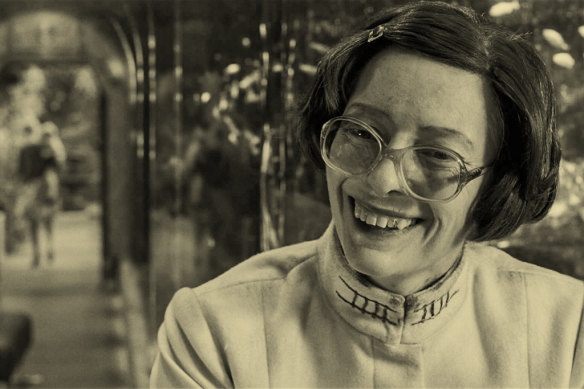
Tilda Swinton sporting teeth by Chris Lyons in the movie Snowpiercer.Credit: IMBD
As Lyons knows, our teeth say a lot about us. They can identify us even if, literally, nothing else remains. They can speak to our social standing and income level. Cosmetic orthodontics, such as veneers and whitening, can reveal our conditioning and anxieties. And we, in turn, can make statements with them. The Vikings filed grooves into their teeth, today’s rappers go for gold replacements and diamond implants. Shimmering “grillz” and sparkling crystal tooth gems are all over TikTok.
Yet, of course, teeth remain as essential as ever. Even if we’re unlikely to die from a cavity these days, life without teeth is pretty awful. As 16th-century Spanish author Miguel de Cervantes observed, “Every tooth in a man’s head is more valuable than a diamond.”
What’s so unusual about teeth? How should we look after them? And can a bite mark really send somebody to jail?
First, how do teeth work?
Most animals’ teeth are specialised. Sharks slice and dice prey (they don’t chew). Cats’ razor-sharp twin canines grasp and tear; their incisors help with grooming. Dogs, too, rely on canines to shred, incisors to grab, and molars to chew and crush. Adult cats have 30 teeth, dogs 42. Giant armadillos in South America’s rainforests have the most teeth of any mammal, 74 peg-like stumps for crunching insects. Great white sharks have slightly fewer in everyday service – around 50 – but more in back-up rows, adding up to several hundred. Depending on your definition of “teeth”, it’s thought sea slugs have the most – several thousand, replaceable over a lifetime.
Thanks to our omnivorous diet, sets of human teeth are more like a Swiss Army knife. “Incisors help us bite into fruit, pointed canines and their moderately crested posterior neighbours pierce and tear meat and plants, and low-crowned molars help us grind up hard foods, such as nuts and seeds,” writes Tanya Smith, a professor at the Australian Research Centre for Human Evolution at Griffith University, in her book The Tales Teeth Tell. Our teeth, she says, magnificently balance efficiency and over-specialisation. In the past, they’ve had to: without good teeth, we were goners. “If your teeth didn’t fit together, or they didn’t come out in time, or they didn’t have the right shapes, you might not make it to adulthood,” she tells us.
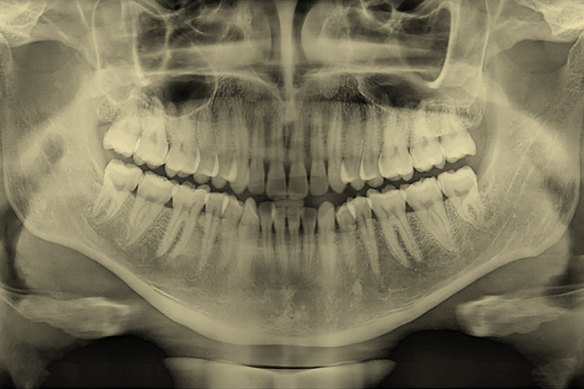
The roots of teeth extend into the upper and lower jawbones, as in this X-ray of adult teeth.Credit: Getty Images, digitally tinted
Our teeth start developing under the gum line when we’re in the womb and erupt, much to our discomfort, when we’re about six months old, with incisors first and molars last, 20 in total. After seven to 10 years, they’re replaced by a permanent set (cue the tooth fairy, turning a loss into the gain of a strong new tooth). Wisdom teeth, four molars at the very back of the jaw, are the last to emerge (whether naturally, surgically or not at all), often in our late teens or early 20s – making up 32 teeth in all.
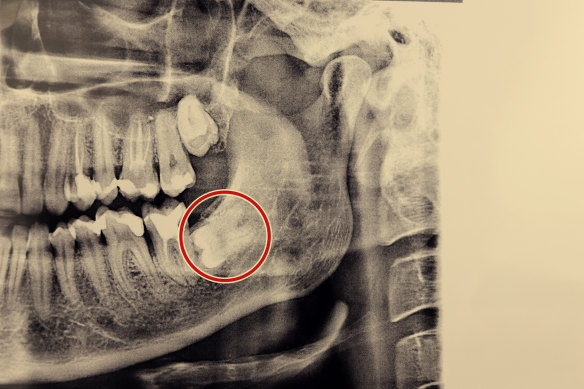
An impacted wisdom tooth. Credit: Getty Images, digitally tinted
At their simplest, each tooth has nerves in its core, or pulp, where teeth “feel” things, including toothache, when you get a cavity. Long roots anchor the teeth in the jaw bone and draw in blood supply. The pulp is covered with hard yellow dentine, which is covered in enamel, sometimes several millimetres thick, to create the crown.
Our teeth are not that different from those of our prehistoric ancestors, which can be a problem in an era where we cook, mince and julienne our food. These days, “They don’t fit quite right,” says Smith. “They get stuck. They still think we’re living in the Stone Age.” Impacted wisdom teeth, which don’t emerge properly, are possibly casualties of our teeth not all fitting in our jaws, which are slowly shrinking over time through lack of hard use. Happily, we have also evolved to invent dentistry. “Our culture has allowed us to tolerate less-optimal teeth,” says Smith.
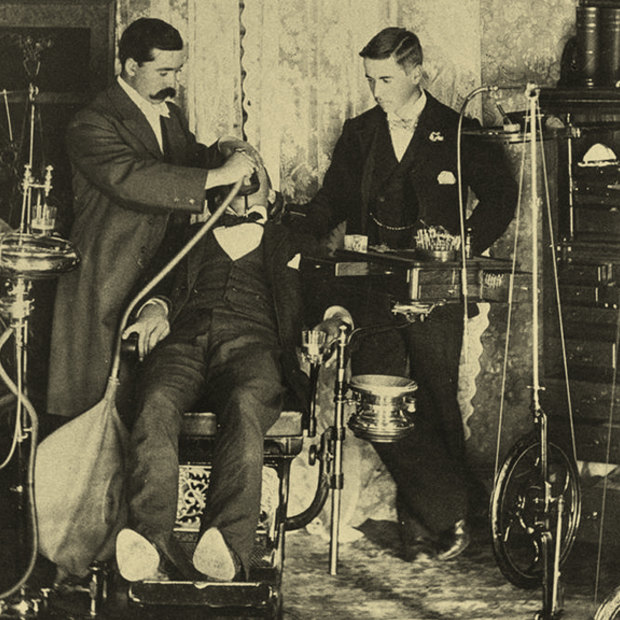
A dentist and his assistant prepare a patient in the country town of Colac in Victoria at the turn of last century.Credit: Alex Bauer, Henry Forman Atkinson Dental Museum
What can our teeth reveal about our pasts?
For anthropological researchers such as Tanya Smith, teeth are incredibly useful. Not only can they survive for aeons relatively intact (teeth aged between 63,000 and 73,000 years old have been found in South-East Asia), but their chemical makeup and wear patterns can reveal much about their owner – what they ate, where they came from, even the season of their birth.
“You can paint this really detailed picture of the biology of an ancient human or even a living person today,” says Smith. “I could tell, potentially, how long you nursed when you were a kid, how often you were sick, whether you moved from one region to another. I might be able to tell what season you were born in.” Even a particularly stressful day – such as the one on which you are born – seems to leave a record in our teeth in the form of a contrasting line, apparent under a microscope.
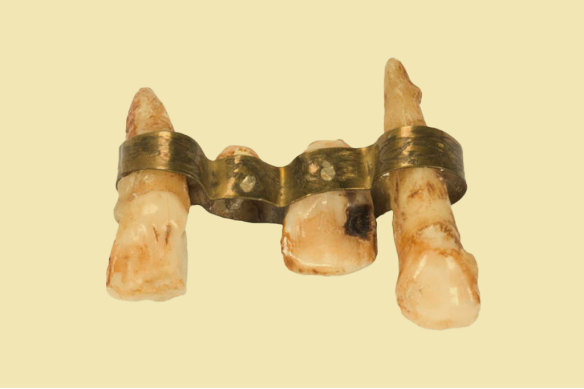
A copy of an Etruscan dental bridge, from 700-500BC, with three natural human teeth held in place by a riveted gold band. Credit: Henry Forman Atkinson Dental Museum, digitally tinted
Teeth also record longer episodes of stress, similar to growth rings in tree trunks. Judith Littleton, a professor in anthropology at the University of Auckland, studied prehistoric teeth found in Bahrain. “Cells stop forming enamel because the body is stressed, and when they start again, it leaves a line. You can track the secrets of those lines through childhood, a history of a child’s exposure to stress and their habits over time.”She also examined the differences in diet between Bronze, Iron and Islamic-age people, noting variations in the way they processed food, which caused their teeth to wear differently. She suggests that a prime cause of cavities was dates – sugary and sticky, they may well have introduced Homo sapiens to wholesale toothache.
Other clues are very particular. When scientists inspected the tooth plaque of a woman who died in Germany in AD 1100, they found particles of lapis lazuli, a precious stone from Afghanistan used in medieval manuscripts, reports National Geographic. The blue flecks turned out to be the earliest physical evidence of a female scribe – they surmised the woman had habitually licked her brush while painting.
‘If you were getting married, what your parents might do is have all your teeth extracted and have you fitted with dentures so you wouldn’t be a burden to your husband.’
Jacky Healy, senior curator Henry Forman Atkinson Dental Museum
In Melbourne, associate professor Rita Hardiman is hoping a large cache of teeth recently dusted off during city excavations will shed light on the health of our Victorian-era ancestors. She has several thousand to study, thanks to dentists who threw extracted teeth down the drain. “We’re hoping to learn about the population in terms of who was going to see the dentist and why,” says Hardiman. “I suspect a lot of the ‘why’ is because things were getting pretty dire, and they couldn’t wait any longer.”
Some of the teeth have clearly been worn down by pipe stems while others appear healthy. “If you’ve lost numerous teeth to decay or gum disease, it might have been more convenient to take [the rest] out to place a full set of dentures,” says Hardiman. Indeed, earlier last century, it was not uncommon for young people to have their teeth extracted and replaced by dentures to save the trouble later.
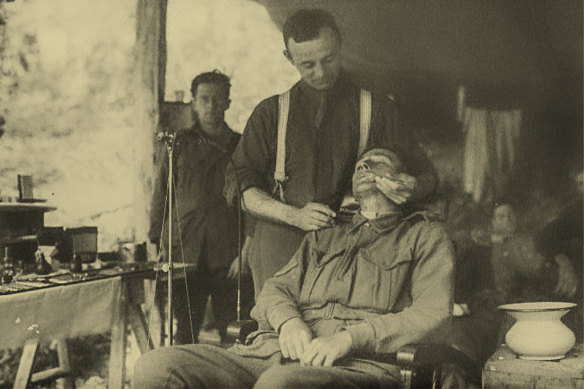
A soldier has his teeth attended to by a dental unit attached to his artillery division in France in 1918. Credit: Henry Forman Atkinson Dental Museum, digitally tinted
The procedure could be a 21st birthday gift or a step in enlisting in the Army. In World War II, the Australian Army Dental Corps pulled 1,550,000 teeth, inserted 2,850,000 fillings and made some 500,000 dentures, writes Colonel Robert Adams. Or, says Jacqueline Healy, senior curator at the University of Melbourne’s Henry Forman Atkinson Dental Museum, “If you were getting married, what your parents might do is have all your teeth extracted and have you fitted with dentures so you wouldn’t be a burden to your husband.”
Today’s dentists can glean a lot just from peering into your mouth. Dr Andrew Gikas, who specialises in bruxism, or grinding (usually in your sleep), might be able to tell if you had grown up in the city or countryside, for instance. “If you have a whole bunch of fillings, you probably grew up in a non-fluoridated area. That’s my first guess.” (The first fluoride added to water was in Beaconsfield, Tasmania, in 1953, but the patchy take-up, often amid controversy, meant Sydney’s water, for example, wasn’t fluoridated until 1968, Melbourne’s in 1977.) “I can probably tell how aggressive you are into brushing by how much you’ve pushed your gums down,” Gikas says. “I can tell whether you’re into acidic drinks – Coca-Cola and soft drinks – because I’ll see some erosion on your back teeth.”
How can teeth identify us?
Teeth are extremely useful for former dentist Richard Bassed, who runs the forensic odontologist department of the Victorian Institute of Forensic Medicine. Made of the hardest substance in the human body, enamel, they can be all that remains of a person if they have perished in a fire or decayed beyond recognition. Even a single tooth can make a positive match, says Bassed, whose career spans the Black Saturday bushfires, the Bali bombing and the 2004 Indian Ocean tsunami.
He pulls up a photograph on his screen showing the aftermath of a bushfire. It’s mostly just a pile of grey ash. “You can see there’s almost nothing left,” he says. “You can see why police officers searching the scene aren’t going to find the teeth. We go there with sieves and fossick around in the ashes.” Then, there’s a hunt for dental records. If families can’t help, calls might go out to dentists in their area. “Fragments of roots, fragments of crowns, you put all those all in the right anatomical position and see if there’s any antemortem [pre-deceased] records that will match,” says Bassed.
A burglar who took a bite out of a hunk of cheese in a Los Angeles house in 1985 went to jail for four years after the coroner’s dental examiner matched an unusual groove in the remnant.
Finding the teeth and teeth fragments and putting them together can be a time-consuming puzzle, he says, “but it’s rewarding because that might be the only remains of that person that their family will get back. It’s either that or nothing. And at least they get the certainty of knowing, yes, this person died, and they’re not holding out hope.”
In crime cases, bite marks have been largely debunked as junk science, says Bassed. Flesh moves around, making bite marks inexact. (You might be able to differentiate between a bite made by an adult or a child, he says, but that’s about it.)
Teeth can leave clues in chewing gum or chocolate, though. “It’s a proper impression of your teeth that isn’t subject to all the vagaries of human skin and healing and movement and all that sort of stuff.” Indeed, a burglar who took a bite out of a hunk of cheese in a Los Angeles house in 1985 went to jail for four years after the coroner’s dental examiner matched an unusual groove in the remnant.
How should we look after our teeth?
Somewhat surprisingly, not all the dentists we spoke with floss every day. It’s like the mechanic whose car is in terrible condition, one of them joked. But they all agree flossing is essential to clear out the food remnants that cause plaque. It’s as important as brushing (so do both, as brushing only removes 60 per cent and cleaning in between removes the other 40 per cent). There’s also an age-old argument among dentists about the best time to brush: long story short, do it twice a day but not too soon after you’ve had anything sugary to eat or drink because sugar can temporarily weaken enamel.
Smoking is, as we know, terrible for gums as it reduces blood flow. Less is known about vaping, but there are naturally concerns about filling your mouth with heated chemicals. “I don’t think we’ve seen enough vaping cases to be able to pick it ,” says dentist Andrew Gikas, “but the gums and the soft tissue look unusual.”
“Genetics does play a role in tooth decay for some,” says Dr Scott Davis, President of the Australian Dental Association. “But to be honest the elephant in the room is diet and preventive care. Minimising refined sugars and effective brushing and flossing is so important to prevent decay.“
How often should we go to the dentist? “Only 31 per cent [of Australians] attend for regular checkups,” says Davis. Most dental care in Australia is not covered by Medicare. “There are more reasons why people do or don’t see a dentist regularly than just money – there are complex behavioural issues as well. But having regular check-ups means that problems can be identified early and often more expensive treatment can be avoided.”
As for whitening, is it safe? Yes, says Davis, but only if you do it under dental supervision, which can pick up potential issues such as cracked teeth and fillings that are another colour. “Hopefully,” he says, “people are looking after their teeth not just because it makes them look good but because it’s good for their overall health. White teeth don’t necessarily mean they are healthy, and it isn’t natural for older people to have bright white teeth.”
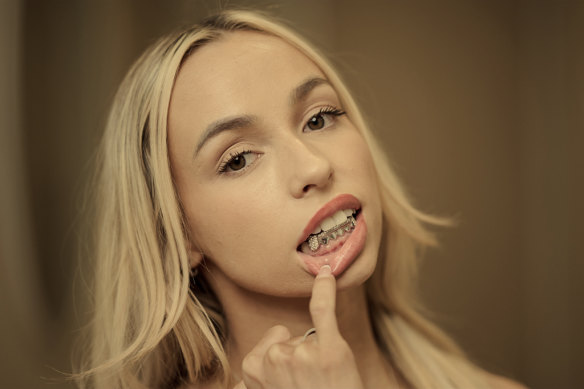
“Grillz”, especially gold and diamonds, are a trend. Saskia, a client of dentist Maheer Shah, shows off hers. Credit: Stefan Gosatti, digitally tinted
Why do we value straight, white teeth so much?
Australian soprano Dame Joan Sutherland may have been blessed with a magnificent voice, but the gods were less generous with her teeth. “You can’t sing like that any more. We’ll have to do something about it,” her husband, conductor Richard Bonynge, told her, quoted in a 1963 profile in The Australian Women’s Weekly. She had them capped, at what was then an enormous expense for a “Covent Garden soprano whose £30 a week salary had to support a household of five and pay the rent”. (She later had to have them recapped after an infection.)
La Stupenda’s tooth troubles were not unusual. For several centuries, refined sugar had been devastating dental health wherever it was consumed, feeding bacteria – chiefly Streptococcus mutans – that live on our teeth, which produce lactic acid, which erodes enamel, causing decay. “People think rich people had good teeth and poor people didn’t,” says Jacky Healy. “In fact, it was the opposite – because what did rich people have? Sugar.”
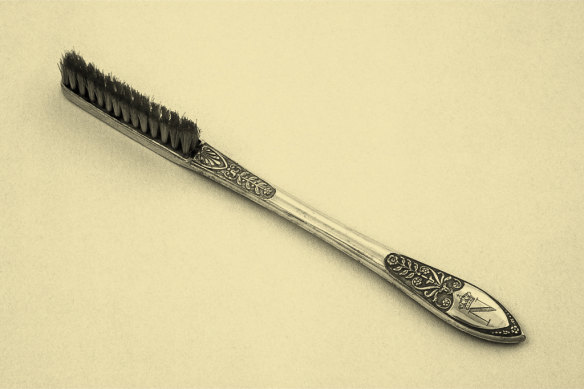
Napoleon was famously finnicky about his teeth, at least by the standards of his time. This toothbrush was made for him around 1800 when he was emperor. Credit: Getty Images, digitally tinted
Sweet tooth Queen Elizabeth I sparked a trend among aristocratic women who blackened their teeth to emulate her. In the early 1800s, Napoleon Bonaparte was fastidious about tooth care and gave his second wife, Marie Louise, a box of dental instruments covered in gold. His first wife, Josephine, however, did not show her teeth in portraits; then again, nobody did. When, in 1787, Madame Vigée Le Brun painted a self-portrait (with daughter) showing a glimpse of a toothy smile, it caused outrage. So did Queen Victoria in 1841 when she posed for a portrait with her mouth – gasp! – open.
“Part of the entertainment of going to the market would be watching people get their teeth taken out, without any anesthetic or antiseptic.”
Curator Jacqueline Healy
While there is evidence of dentistry going back to the Stone Ages, in the West, “dentists” were considered to be for the brave and desperate; their toolkits included the pelican, resembling the seabird’s bill, used to grip and lever out teeth, invariably damaging other teeth and gums in its wake. Says Healy: “Part of the entertainment of going to the market would be watching people get their teeth taken out, without any anesthetic or antiseptic. Often, a bit of your jaw might come off.”
The modern profession is generally recognised as emerging in the 18th century with French physician Pierre Fauchard, a dentiste (from the Latin “dent” or tooth), who in 1728 published the first dental textbook, The Surgeon Dentist. One of his innovations was improving how dentures looked by enamelling them with the assistance of potters. Yet techniques largely remained crude. Early false teeth, circa 1800, had sprung hinges and a proclivity to leap out of your mouth. With ivory or porcelain dentures expensive, a cheaper kind emerged known as “Waterloo Teeth” – real teeth looted from battlefields (as well as morgues and graveyards).
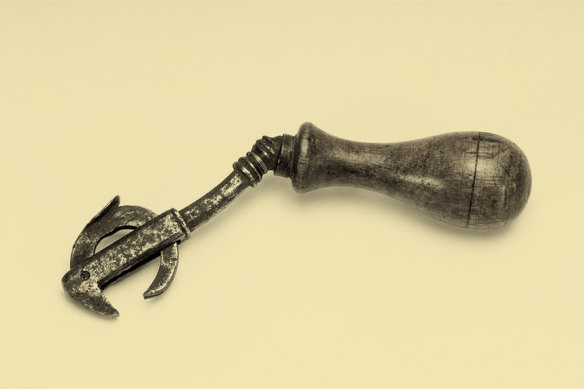
A pelican, such as this one from around 1700, was used to pull teeth, often (unsurprisingly) causing collateral damage.Credit: Henry Forman Atkinson Dental Museum
By the 20th century, sugar had continued its march. “The most obvious sign of undernourishment is the badness of everybody’s teeth,” observed George Orwell in his 1937 treatise on life in northern England, The Road to Wigan Pier. One woman told him bluntly: “Teeth is just a misery.” Even today, decay is rife worldwide: a recent study suggested more than a third of people have untreated cavities or decay.
It makes sense, then, that straight white teeth should have their appeal as an aspiration. Yet by the 1970s, cosmetic dental work was still far from routine, even for celebrities. David Bowie straightened and whitened his typically “English” teeth only after he married the supermodel Iman in 1992. Having your teeth “done” was still seen, at least in Britain, as vain.
“A distinguishing feature of North American society is preoccupation with self-image. Nowhere is this more apparent than in the prevailing fixation with straight, white teeth.”
Abeer Khalid and Carlos Quinonez
In 1995, novelist Martin Amis was roasted in the press for reportedly spending nearly $40,000 getting his (chronically troublesome) teeth pulled and replaced with implants: who did he think he was! That same year, though, The New York Times reported that recession-hit middle-class American families were prepared to cut back on anything – except straightening their children’s teeth, now seen as a vital social leg-up. “If you go into a job with teeth out of a novelty store, people aren’t supposed to discriminate,” one orthodontist said. “But people do.”
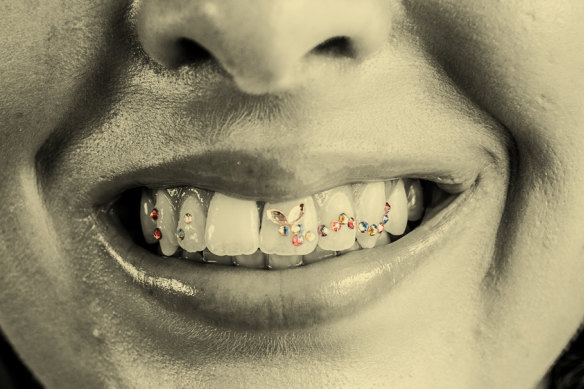
Ashlin Carlisle shows off her tooth gems.Credit: Steven Siewert, digitally tinted
White teeth reinforce class differences as symbols of social advantage or disadvantage, argue Abeer Khalid and Carlos Quiñonez from the University of Toronto. “A distinguishing feature of North American society is preoccupation with self-image,” they write in the journal Sociology of Health and Illness. “Nowhere is this more apparent than in the prevailing fixation with straight, white teeth.”
By 2007, a paper published in the British Dental Journal stated: “Subjects with a relatively normal dental appearance are judged as better looking, more desirable as friends, more intelligent, and less likely to behave aggressively, and teachers have higher expectations of them.” In 2013, a poll of more than 2000 Brits concluded they thought whiter teeth made people appear five years younger, appear to earn $15,000 more than they did and improve their employment potential by 10 per cent.
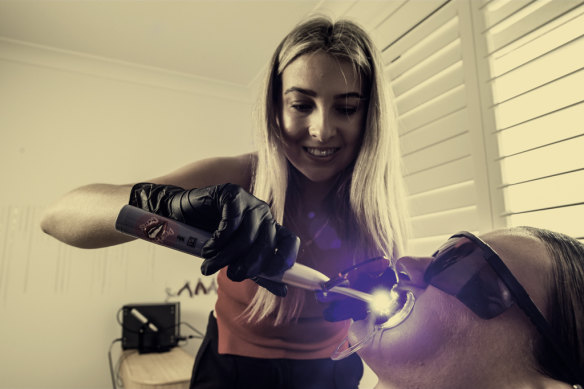
Ashlin Carlisle puts tooth gems on customer Lili Ramundi. Credit: Steven Siewert, digitally tinted
While some tooth treatments have a functional purpose – heading off the long-term ill effects of misaligned jaws, uneven bites and cavities, which can cause health issues elsewhere in the body – others are purely cosmetic. For ultra “perfect” teeth, today’s go-to fix is veneers, thin shells made of dental composite or porcelain that fit over real teeth to give the appearance of a dazzling smile. First used in the 1930s, when they were crude and stained easily, today they come in a range of whites to suit skin tones. “We’ve definitely seen a shift from having dentures and anything removable,” says dentist Peter Laird of Glenferrie Dental. “People are wanting something a lot more immediate, a lot more permanent, and not having to worry about teeth moving around any more.”
In Australia, teeth embellishments are having a moment: “grillz” and tooth gems that add a flash of bling to a smile.
Subtlety is in vogue, too. Catherine, the Duchess of Cambridge, has apparently corrected her teeth with “micro-rotation”, where her outside front teeth (incisors) were slightly realigned with braces (on the backs of her teeth) to create a slightly imperfect, more “natural” smile. In Japan, where finding beauty in imperfection is de rigueur, slightly immature-looking canines are called “yaeba” or “double tooth” and are supposedly coveted among some young women.
In Australia, meanwhile, teeth embellishments are having a moment: “grillz” and tooth gems, both (usually) removable adornments that add a flash of bling to a smile. Both are throwbacks to ancient times, when gold or jewels were used to enhance a smile (think, the Etruscans) or filed for effect, as were the Vikings’ (as if they were not scary enough already).
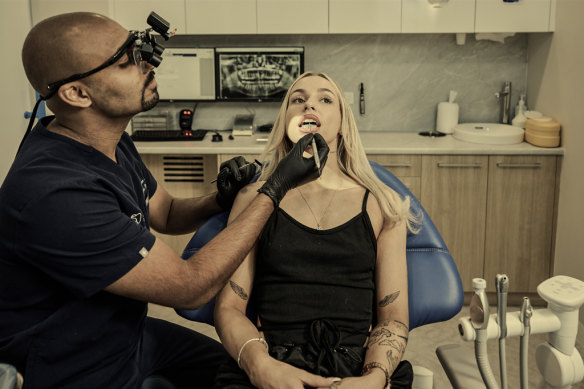
Dentist Maheer Shah adds “grillz” for client Saskia at his practice in Perth.Credit: Stefan Gosatti, digitally tinted
Ashlin Carlisle learned the technique of affixing tooth gems on a trip to London and now runs a small business called Pearlyygems from her Sydney home. She mostly uses crystals, which are non-toxic in case you accidentally swallow one, and explains to her clients how to look after them and to visit a dentist when they want them removed. How long they last, she says, can vary. “It’s all dependent on the size and the placement of the gem and how the client follows their aftercare.”
In Perth, dentist Maheer Shah – aka “Dr Grillz” – has expanded into decorative grillz popularised by US rap artists such as Post Malone, who reportedly spent more than $US2 million ($3 million) on 18 porcelain veneers, eight platinum crowns and two six-carat diamonds to replace his upper canines. Shah’s grillz are less intrusive: made of gold or silver, they sit over the front teeth like a custom-made mouthguard. “It’s becoming so much more accepted, like tattoos,” he says. Occasionally, a client will want something more permanent, which he advises against. “It’s pretty rare, but one guy bought eight gold teeth,” says Shah.
After the success of the Freddie Mercury biopic, Chris Lyons had a set of gold “Freddie” teeth made for Rami Malek for him to wear to events. Mostly, though, Lyons works with normal dental composites to fashion his prosthetic fangs, tusks or likenesses, such as those for Tilda Swinton in Snowpiercer or for Sewell in Scoop. “Prince Andrew’s teeth are quite particular,” he tells us. “The more subtle stuff is actually more challenging than the big monster stuff. You want people to look at it and think, have they done something?”
Get fascinating insights and explanations on the world’s most perplexing topics. Sign up for our weekly Explainer newsletter.
Let us explain
If you'd like some expert background on an issue or a news event, drop us a line at explainers@smh.com.au or explainers@theage.com.au. Read more explainers here.